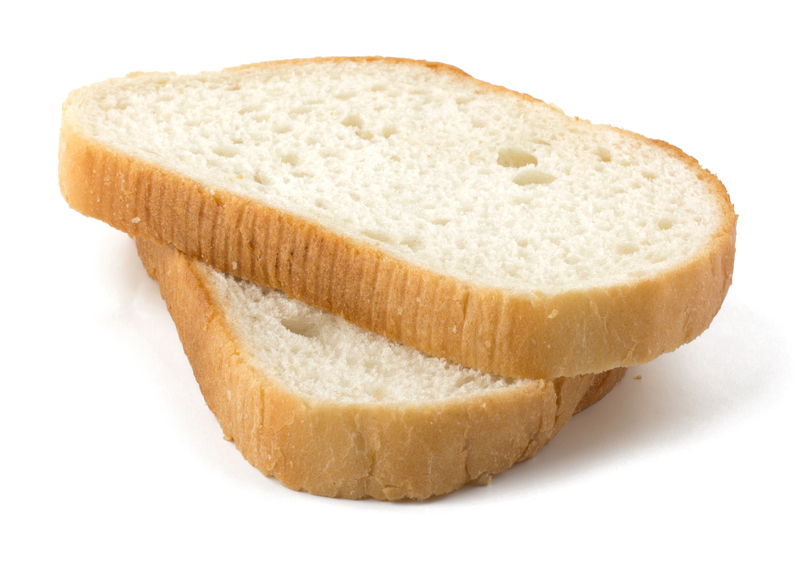Dust-Free Lifestyle: Effective Home Practices for Allergen Control
Posted on 23/09/2025
Dust-Free Lifestyle: Effective Home Practices for Allergen Control
Millions of people around the world battle with allergies triggered by dust and other home-based allergens. Adopting a dust-free lifestyle not only enhances your living comfort but also supports overall health and well-being. In this comprehensive guide, you'll discover proven methods and savvy tips to achieve and maintain a low-dust home--your path to effective allergen control. Whether you're an allergy sufferer yourself or want a healthier environment for your family, these practices can transform your quality of life.
Why is Controlling Dust and Allergens at Home Important?
Dust may seem insignificant, but it acts as a carrier for numerous allergens within your home. Common indoor allergens include dust mites, pet dander, pollen, mold spores, and even household chemicals. Frequent exposure to these particles can aggravate or trigger conditions such as asthma, allergic rhinitis, eczema, and other respiratory issues.
- Reduced allergy symptoms: Limiting dust exposure lessens sneezing, coughing, and itchy eyes.
- Improved air quality: A dust-free home supports better breathing, especially for children and the elderly.
- Enhanced sleep quality: Allergen control can help everyone in your home rest more peacefully.
Let's dive into actionable steps for dust management and efficient allergen control in your living spaces.

Understanding the Sources of Dust in Your Home
Before you embark on your dust-busting mission, recognize where dust comes from. Household dust is a complex mixture of dead skin cells, fabric fibers, soil, pet dander, and even microscopic bugs known as dust mites. It arrives via open windows, doors, clothes, and shoes.
Main Sources of Indoor Dust and Allergens:
- Textiles: Carpets, upholstery, curtains, and bedding easily trap dust.
- Pets: Hair and dander shed continuously, adding to allergen load.
- Openings: Doors and windows let in pollen, mold spores, and outdoor dust.
- Foot traffic: Shoes bring in dirt, pollen, and bacteria from outside.
- HVAC systems: Poorly maintained air filters can redistribute dust throughout your home.
Step-by-Step Guide to Achieving and Maintaining a Dust-Free Environment
1. Smart Cleaning Routines for a Dust-Free Home
- Dust surfaces with microfiber cloths: Use a slightly damp microfiber cloth for the best dust pickup. Traditional feather dusters often just move dust around instead of removing it.
- Vacuum regularly with HEPA filters: Invest in a vacuum with a HEPA (High-Efficiency Particulate Air) filter to trap even the smallest particles and prevent them from recirculating.
- Wet mop hard floors: Sweeping can stir up dust, so mop with water or a mild cleaning solution instead.
- Pay attention to neglected areas: Clean behind and beneath furniture, along baseboards, on ceiling fans, and inside vents where dust often accumulates unnoticed.
2. Maintain Allergen-Resistant Bedding
- Use allergen-proof covers: Encasing pillows, mattresses, and box springs with dust mite-proof protectors creates an effective barrier.
- Wash linens in hot water: Laundering your sheets, pillowcases, and blankets weekly in water at least 130?F (54?C) kills dust mites and removes allergens.
- Limit bedding items: Minimize throw pillows and plush toys, as they attract and retain dust.
3. Flooring Choices and Maintenance for Allergen Control
- Opt for hard floors: Hardwood, tile, or linoleum are easier to keep dust-free than carpets.
- Keep carpets clean and minimal: If you must have carpets, select low-pile and vacuum frequently with a HEPA-filter vacuum.
- Wash rugs and mats regularly: Area rugs, doormats, and runners should be shaken out or washed weekly.
4. Controlling Humidity and Reducing Mold
- Use a dehumidifier: Maintain indoor humidity below 50% to deter dust mites and mold growth.
- Ventilate damp areas: Ensure bathrooms, kitchens, and laundry rooms are well-ventilated to prevent moisture buildup.
- Inspect for leaks: Repair plumbing or roof leaks quickly to prevent moisture, which fosters mold and mildew--both potent allergens.
5. Improve Indoor Air Quality
- Change HVAC filters regularly: Replace or clean air conditioning and furnace filters every 2-3 months (or as recommended by the manufacturer).
- Install air purifiers: HEPA air purifiers effectively trap dust, pollen, pet dander, and smoke particles in bedrooms and living areas.
- Keep windows closed during high pollen seasons: This simple measure prevents outdoor allergens from invading your living space.
6. Declutter to Reduce Dust Traps
- Minimize collectibles and knick-knacks: Displayed objects attract dust, so keep shelves simple and easy to clean.
- Avoid excessive fabric decor: Heavy curtains, fabric wall hangings, and table skirts can harbor dust mites.
- Organize storage: Store infrequently used items in closed bins or cabinets to prevent dust accumulation.
7. Special Tips for Pet Owners
- Regularly groom pets: Brush pets outdoors and bathe them consistently to reduce dander shed indoors.
- Keep pets out of bedrooms: Allergen-sensitive individuals should keep sleeping areas pet-free.
- Clean pet bedding often: Wash your pet's bedding and toys regularly in hot water.
Best Practices for a Long-Lasting Dust-Free Lifestyle
Adopt Daily and Weekly Habits
- Remove shoes at the door: Set up a no-shoes policy to dramatically reduce the dust, pollen, and bacteria that gets tracked indoors.
- Wipe surfaces frequently: Kitchen counters, tabletops, and electronics collect dust quickly and benefit from routine attention.
- Launder curtains and cushion covers: Schedule regular washing or vacuuming of these fabrics, as they are notorious dust collectors.
Seasonal Dust and Allergen Control
- Spring cleaning for allergens: Deep-clean in spring or after pollen peaks to keep allergen levels low.
- Monitor pollen forecasts: During high pollen days, keep windows closed and consider using an air purifier.
- Transition wardrobes and bedding: Store off-season clothing in sealed containers to prevent dust buildup on unused items.
Common Mistakes to Avoid When Aiming for Dust and Allergen Control
- Ignoring filters: Forgetting to change HVAC and vacuum filters nullifies your efforts for dust and allergen control.
- Dry dusting with feather dusters: Always opt for microfiber or damp cloths.
- Using scented or harsh chemicals: Artificial fragrances and high-VOC cleaners can exacerbate allergies--always choose fragrance-free, hypoallergenic solutions.
- Letting clutter accumulate: Every additional item provides a landing spot for dust. Adopt a regular decluttering habit.
Tools and Products for a Dust-Free, Allergen-Safe Home
Recommended Cleaning Equipment
- HEPA-filter vacuum cleaners: Capture particles as small as 0.3 microns, including dust mites, dander, and pollen.
- Microfiber dusters and cloths: These trap and hold dust more effectively than traditional materials.
- Robotic vacuum cleaners: Automate floor cleaning daily, especially useful for pet owners.
Latest Home Gadgets for Cleaner Air
- Smart air purifiers: Some models monitor air quality in real time and adapt automatically.
- UV sterilizers: Certain advanced air purifiers incorporate UV-C light for added germ and allergen control.
Recommended Hypoallergenic Cleaners
- Choose biodegradable, fragrance-free surface sprays.
- Use unscented laundry detergents for washing linens and curtains.
Frequently Asked Questions about Dust and Allergen Control
What is the most effective way to remove dust from my home?
Regular vacuuming with a HEPA filter, combined with using damp microfiber cloths on surfaces, provides the most comprehensive dust and allergen reduction.
Can indoor plants help reduce dust and allergens?
While indoor plants can purify some pollutants, certain plants may harbor mold or collect dust. If you love greenery, choose easy-clean, low-allergen varieties, and dust their leaves regularly.
Are air purifiers worth the investment for allergen control?
High-quality HEPA air purifiers can significantly reduce airborne allergens and dust, particularly in bedrooms and living areas. They are especially beneficial for those with asthma or severe allergies.
How often should I clean to maintain a dust-free environment?
Consistency is key. Light cleaning and dusting should be done weekly, while deeper cleaning of bedding, carpets, and upholstery should be done at least monthly, depending on your household's needs.

Long-Term Benefits of a Dust-Free Lifestyle
Adopting effective home practices for allergen control results in tangible, long-lasting improvements:
- Reduced allergy and asthma symptoms
- Lowered illness risk due to improved hygiene
- Better sleep quality
- A safer environment for vulnerable populations like young children and the elderly
Conclusion: Start Your Journey to a Dust-Free, Allergen-Reduced Home
Transforming your home into a dust-free haven is more than just about cleanliness--it's about safeguarding the health of your loved ones. With the practical tips and routines highlighted in this article, you'll be well-equipped to minimize allergens and enjoy a fresh, vibrant living space. Consistency, smart habits, and the right products are your allies in pursuing a healthier, happier, dust-free lifestyle. Remember, every small effort counts--so start today and breathe easier tomorrow!
For more tips on allergen control and healthy home living, bookmark this guide and share it with friends or family who want to live their best, allergen-free life.



